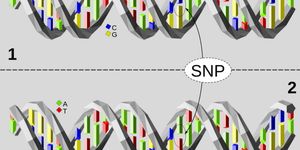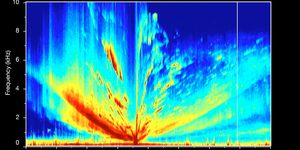New Potential Inhibitor Target for Mantle Cell Lymphoma
Mantle Cell Lymphoma (MCL) is a rare form of non-Hodgkin’s Lymphoma (NHL) and is so named because of the cells involved. The mantle is part of follicular zones which surround germinal centers within each lymph node. The mantle cells become mutagenic and as the mantle cell population grows, the remainder of the lymph cells. The disease primarily involves the lymph nodes and less often, in about 25% of cases, in the blood or bone marrow. MCL is usually aggressive. The morphology of MCL is very similar to Chronic Lymphocytic Leukemia; nuclear irregularities in the cell can be more prominent but are often indistinguishable from CLL cells. There are molecular techniques that can be used to diagnose MCL including evaluating cell markers like B-cell antigens CD19, CD20 & CD22 and using fluorescence in-site hybridization (FISH) to characterize the present of a translocation between chromosome 11 and chromosome 14. In 90% of cases of MCL, a protein called cyclin D1 is also present. Clinicians use these tests and the evaluation of blood levels of lactate dehydrogenase (LDH) and beta-2 microglobulin to determine aggressiveness and guide therapeutic intervention. The challenge is that while some patients diagnosed with MCL are young and can undergo chemotherapy and a bone marrow transplant, the larger majority have disease identified in their later years at age 68 or older. There is a need for additional alternative treatments.
One group of researchers published an article in Oncotarget last month outlining a novel therapeutic option for targeting MCL cells. The gene product of BMI-1 is required for the growth of MCL cells and is found to be upregulated in MCL. A selective inhibitor, called PTC596, has been reported to inhibit BMI-1 expression in these cells. PTC596 initiated apoptosis in MCL cells.
BMI-1 is a proto-oncogene and polycomb ring finger protein that plays a role in chromatin remodeling and epigenetic labeling processes for regulating embryonic development and self-renewal in stem cells. It is also protein know to participate in DNA damage repair. According to the literature published on BMI-1, its divergent expression can also mean resistance to chemotherapy. The gene is found on chromosome 10 at 10p12.2 and the resultant protein has 326 amino acids.
The Federal Drug Administration in the US approved acalabrutinib last October for the treatment of adults with MCL but those patients need to have been treated with at least one prior therapy. This drug was approved using the FDA’s accelerated approval process because there has been such a need for treatment for this very aggressive form of cancer. Another treatment approach is the use of ibrutinib, which binds to Bruton’s tyrosine kinase (BTK). This drug has been helpful in the treatment of CLL and can reduce the tumor burden in combination with other therapies.
Sources: Oncotarget, Lymphoma Research Foundation, Therapeutic Advances in Hematology, GeneCardsSuite, FDA,









